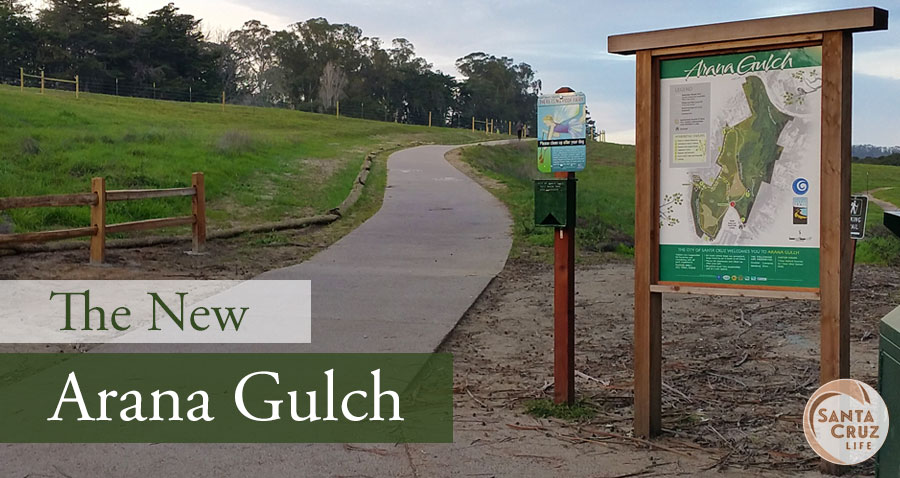
The completion of the Arana Gulch multi-use trail project connecting Broadway and Brommer Streets has stirred up a lot of mixed feelings amongst Santa Cruz locals.
Some people are outraged that this mostly untouched 68-acre green space has been torn up by tractors, fenced off, and partly paved over. But others are enjoying the many positive results of this project including bike safety, increased accessibility, and surprisingly, a chance at survival for an endangered and endemic subspecies of Santa Cruz tarplant.
From Wild Space to Tamed Urban Park
It was really hard to watch the quiet, open meadows at Arana Gulch transform into a noisy, congested construction zone bisected by chain link fences. During my college days, I would run the greenbelt’s under-used dirt paths to escape people, cars, and my anxieties. A little over a year ago, my boyfriend and I took a sunset walk with our cattle dog through Arana Gulch and the serenity and beauty there sold us on the house we were debating whether or not to buy.
I, like many other Santa Cruzans, saw the multi-use trail project as the destruction of not only a rare and beautiful habitat but also of a place I called home. It was a place I used for personal reflection, escape, and rejuvenation. I liked it because not many other people used it so it felt like mine, and I wanted to keep it that way.
But perhaps not all places are meant to be kept wild and secret. Perhaps, after more than 20 years of controversy and court battles, it’s time to accept that Arana Gulch has been drastically altered and there’s no going back.
A New Outdoor Community Space
Walking through Arana Gulch today is more like a walk in a public park versus an exploration through a wild open space. The paved trails (fortunately not regular pavement but rather a pervious concrete that allows rainwater to pass through) are bustling with pedestrian and cyclist traffic.
Couples with strollers and little ones on push bikes stop to read the new interpretive signs describing the park’s fragile ecosystem; cyclists commuting across town maneuver around those out for a leisurely stroll; elderly folks stop to enjoy sweeping views of the meadow or harbor at one of the new benches; children play in the low-slung branches of an old oak tree on the greenbelt’s outer edges.
Reclaiming the Land
A sense of community permeates the landscape. It feels like the whole town has come together to reclaim a space that before felt unsafe at times due to drug-users and mentally unstable homeless people using it as a place to take a hit or a nap.
I never did feel entirely comfortable walking the outer dirt trails or stopping to write in my journal at the very oak tree that children now play in. It’s refreshing to see the community reclaim this land and interact with it in a way that hasn’t happened perhaps since the 1980s when cattle grazed here.
This land has been managed in some way since the native peoples of the California coast lived here. They used controlled burns to maintain the prairie’s biodiversity and actively pruned and even removed certain less useful plants.
Of course, the new trails, fencing, and bridges are a far cry from the type of land management practiced by these peoples hundreds of years ago, but it is a human attempt, naturally flawed, to improve the landscape for both the people and native flora and fauna.
As a community space and cycling commute, Arana Gulch is a success, but there are a few ways in which the new space falls short. So all positivity aside, here are a few reasons why the new multi-use trail project at Arana Gulch is not all it’s cracked up to be.
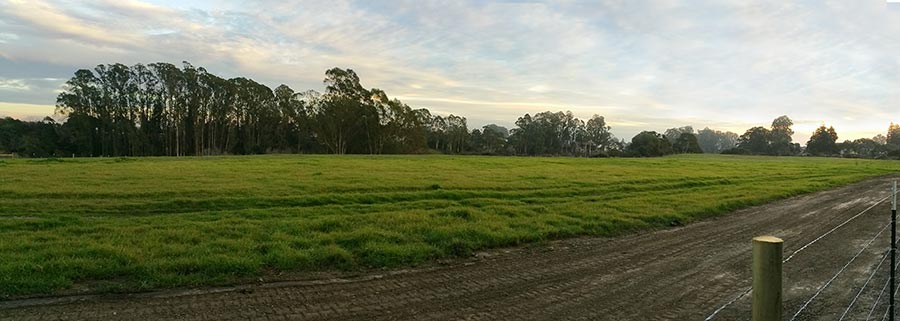
Arguments Against:
- Wide Concrete Paths Destroyed Tarplant Habitat: The construction of the new pervious concrete trails required heavy bulldozing and disruption of a designated environmentally sensitive habitat area (ESHA) critical to the endangered tarplant. The paths are four feet wide with several more feet of disturbed soil on either side, compared to the old one to two feet wide dirt paths. Some of this destruction is sadly irreversible.
- Potential Negative Impact to Arana Creek: The retaining walls and ramp built to connect Brommer Street to Arana Gulch are built in a floodplain over Arana Creek. This construction may have negatively impacted three Federally Endangered species known to use the perennial stream: steelhead trout, coho salmon, and tidewater goby. (It is not clear how the walls and ramp may have impacted this habitat.)
- From Open Space to Commuter Route: A quiet, mostly natural green space has been transformed into a bustling, paved thoroughfare for bicyclists.
- Habitat Fragmentation: The new fencing fragments a habitat used by coyotes, skunks, woodrats, and other native mammals. It is unclear if these animals will still use the open prairie here with fencing and cattle making this a potentially unsafe corridor.
And now for a more positive outlook:
Arguments for the Multi-Use Trail Project:
- Defined Trail System: The new designated pervious concrete trails keep people from widening dirt pathways and trampling vegetation. (Yes, it’s true that the new trails themselves have in a sense “trampled” vegetation but work with me here.) The new trails avoid the tarplant population areas except for one subpopulation where tarplants have not been seen since 1998.
- 90% of the Greenspace is Protected: According to the Arana Trail Project website “over 90% of the green space is protected and closed to the public” giving plant and wildlife species a chance to coexist with people in the greenbelt. This is especially apparent in the acreage around Arana Creek. It appears that, with the exception of the new Brommer Street Bridge, this riparian habitat has remained untouched.
- Greater Accessibility: The new trail system allows people of all physical abilities to experience Arana Gulch which means more people will be exposed to and learn about the unique ecosystem in this space.
- Expanded Public Access Leads to a Safer Space: More community members using the space means it is far less likely to be a haven for drug users and people with bad intentions.
- Safer Bike Route from Broadway to Brommer Street: On December 26, 2014 a 63-year-old man was killed in a hit and run when riding his bike along Soquel Avenue towards the East side—just blocks from the new route through Arana Gulch. Soquel Avenue is a notoriously unsafe route for bikers. The new trails give cyclists a safe, speedy route from Midtown to the Eastside, hopefully encouraging more people to leave their cars in the driveway and commute by bike.
- Conditions for the Endangered Tarplant May Actually Improve: After many years of pretty much no land management in Arana Gulch the tarplant has suffered, its population steadily decreasing year after year. From the 1880s to the 1980s, cattle grazed on this land effectively keeping nonnative grasses in check and promoting the growth of native plant species, like the tarplant. Even though many view the newly installed cattle fences as an eyesore, they are actually supported by Friends of Arana Gulch, the Sierra Club, and the California Native Plant Society. Recent research has shown that cattle grazing is most likely the best land management strategy to improve and spread growth of the tarplant and other native species, perhaps eventually making up for the plants killed during construction.
- New School Programs at Arana Gulch: There is rumor that outdoor education programs will be offered in Arana Gulch, perhaps through the Santa Cruz Museum of Natural History, using the new interpretive panels. Hopefully these plans will come to fruition and more schoolchildren will have the opportunity to use nature as their classroom. Maybe this once wild space, now criss-crossed by fencing and permanent trails, will get young minds thinking about the definition of a wild space and how we can live in harmony with the natural world. They may question who the present state of Arana Gulch most benefits (people or wildlife?) and come up with their own creative solutions for managing our green spaces.
Let’s Look at the Bright Side
We don’t yet know how the Santa Cruz tarplant will fare with the new trail system, but the increased usage of Arana Gulch by the community is already apparent. If this project really does get more people outside and aware of the ecosystems like estuaries and rare coastal prairie found at Arana Gulch, are the fences and paved trails really so terrible?
Video courtesy of People Power, shot by Greg McPheeters.
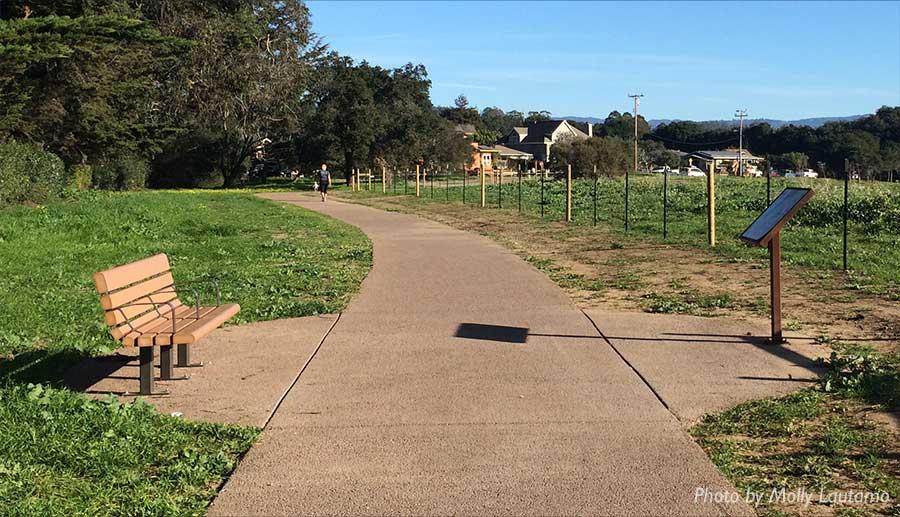
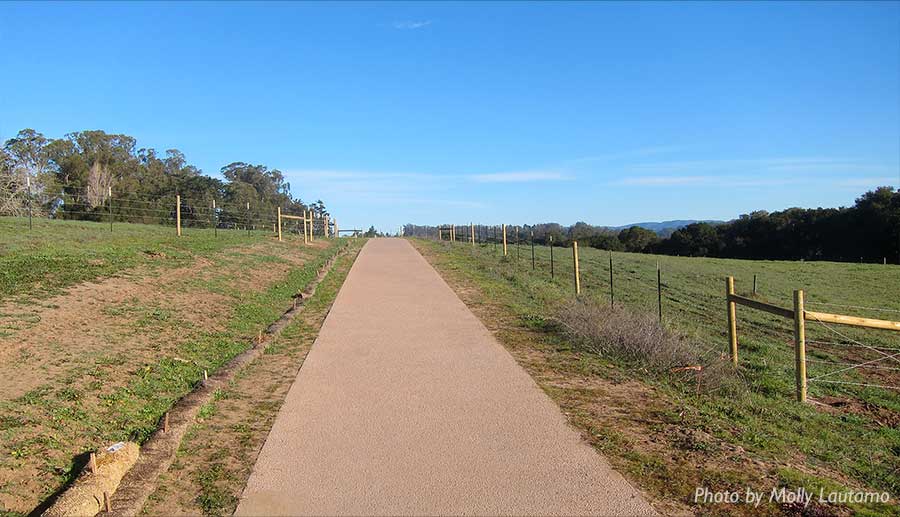

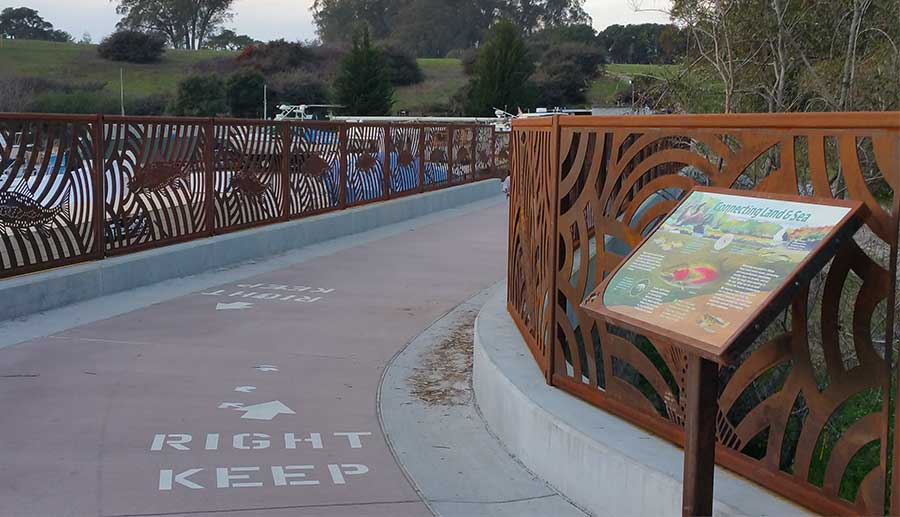
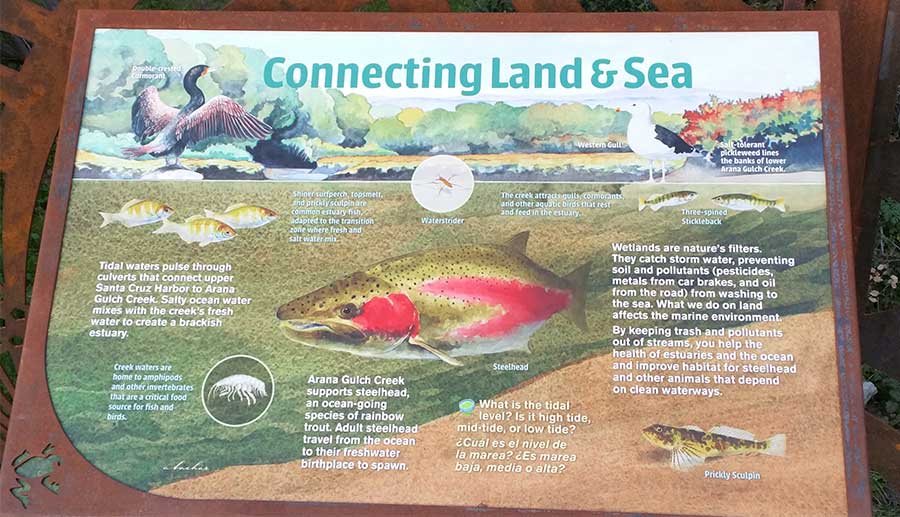
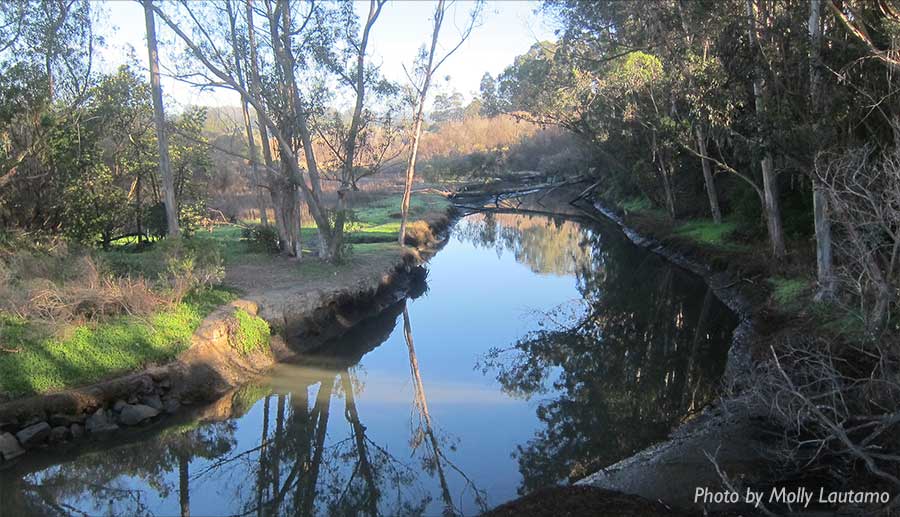
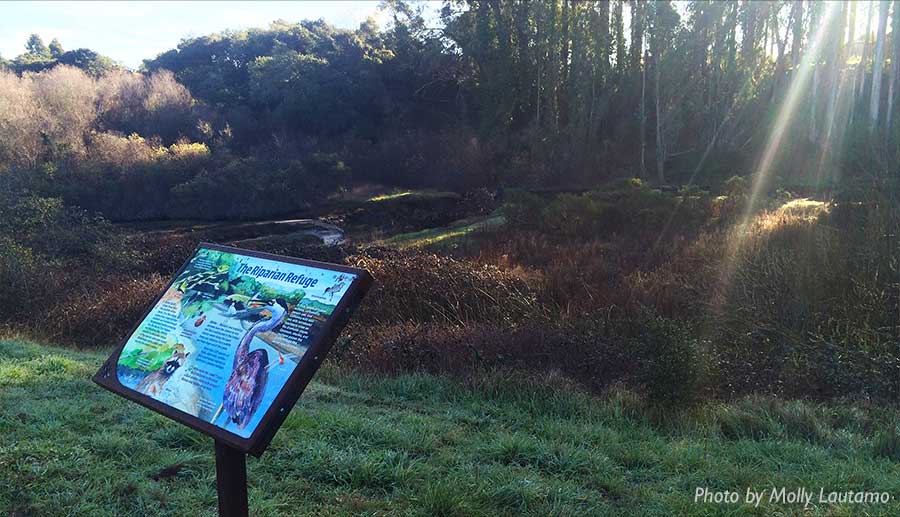
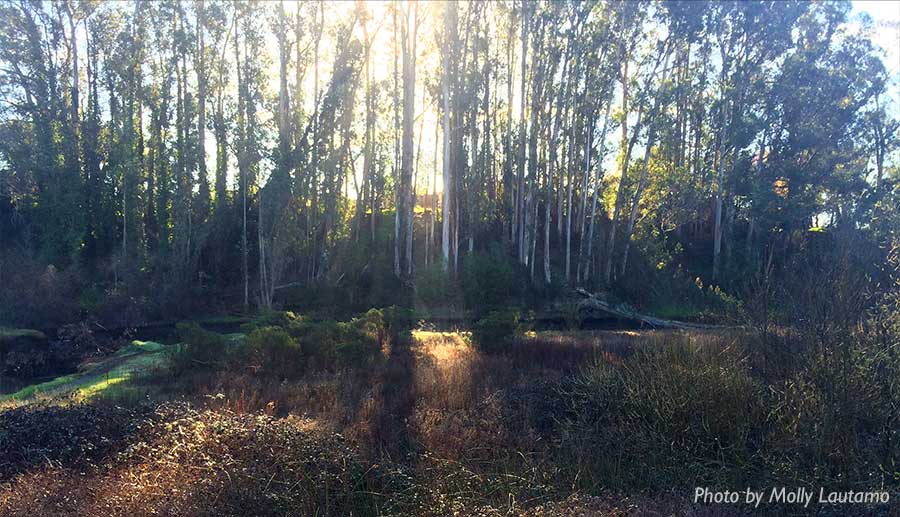
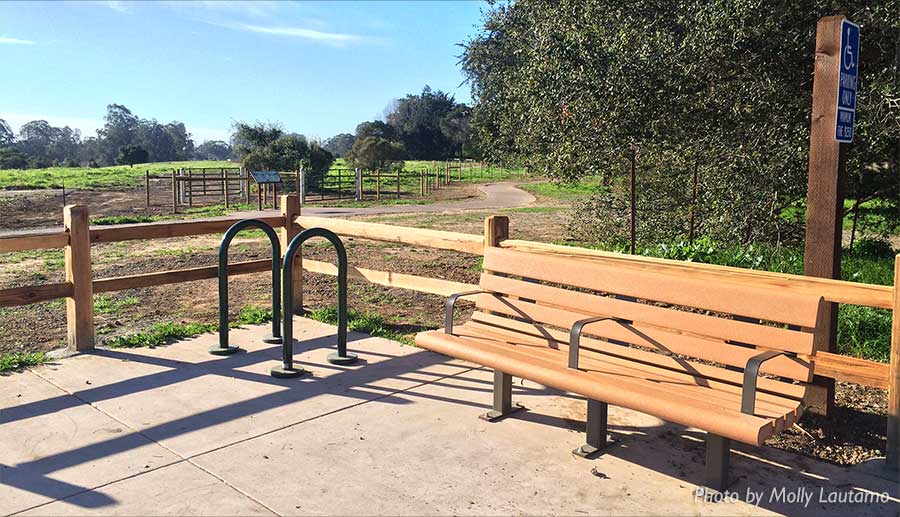
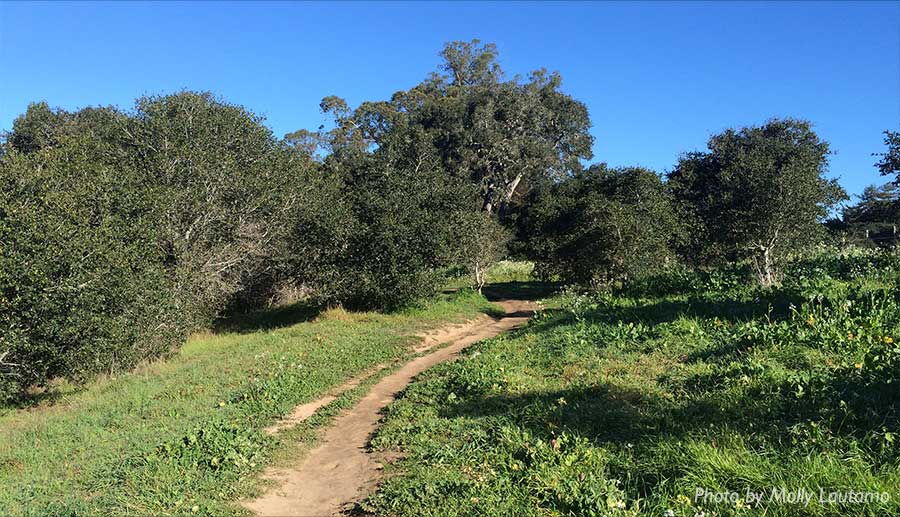
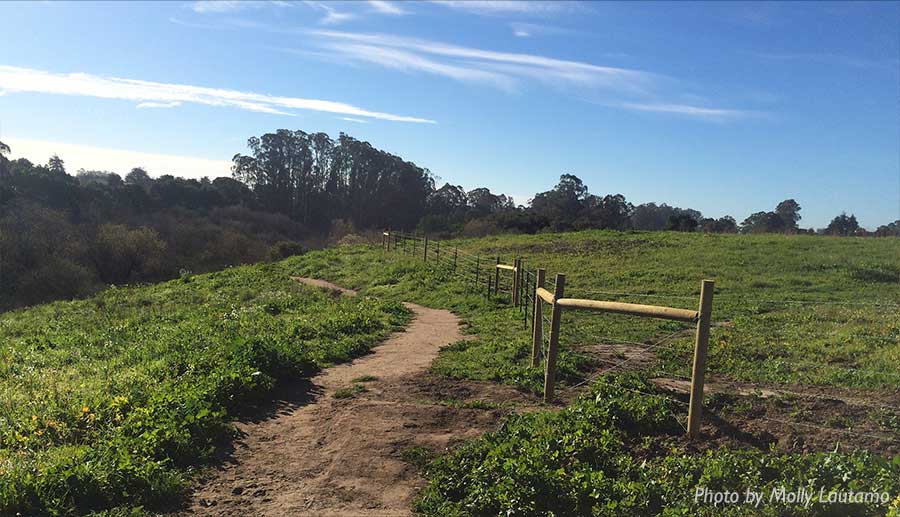
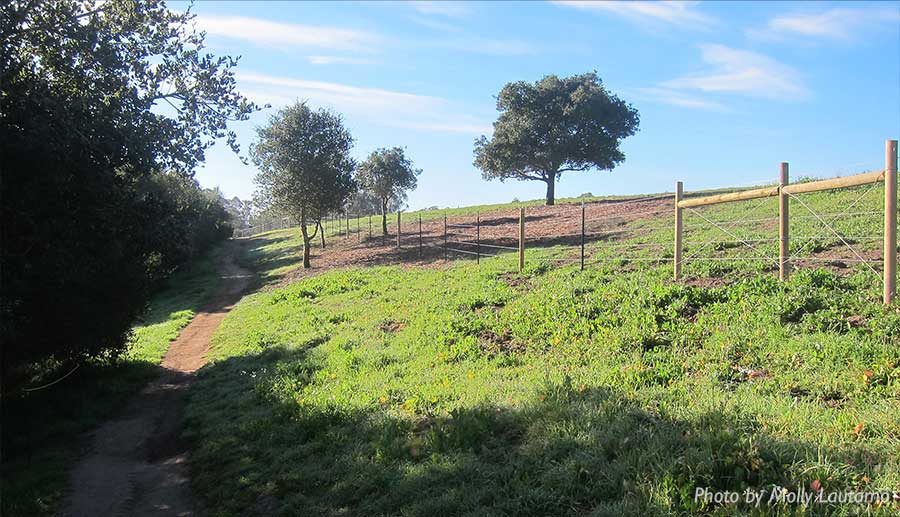

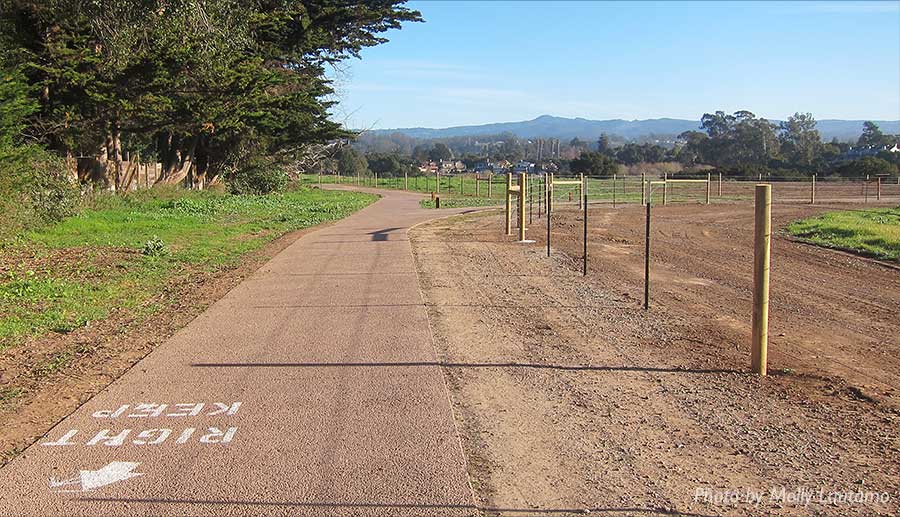
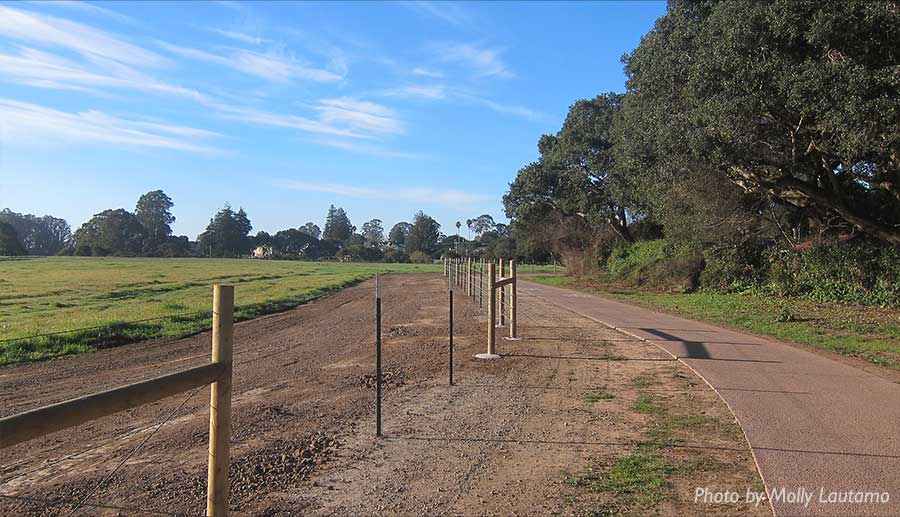
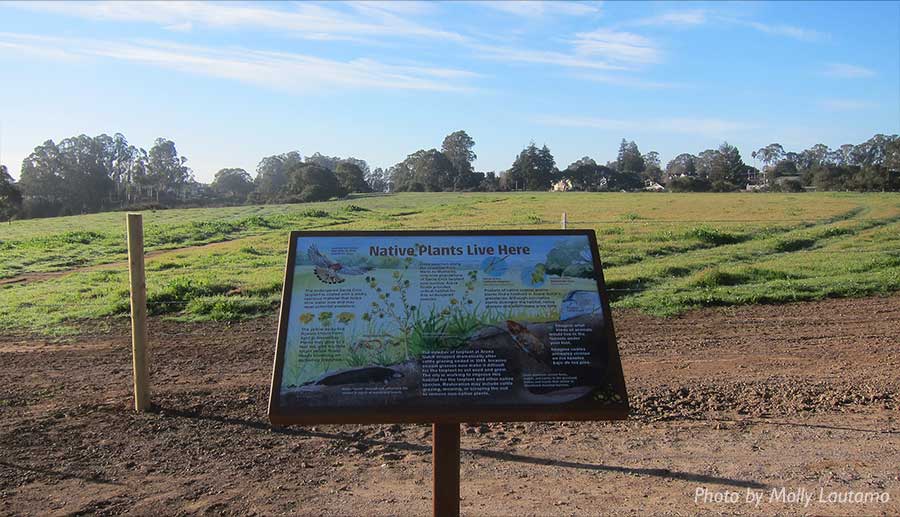

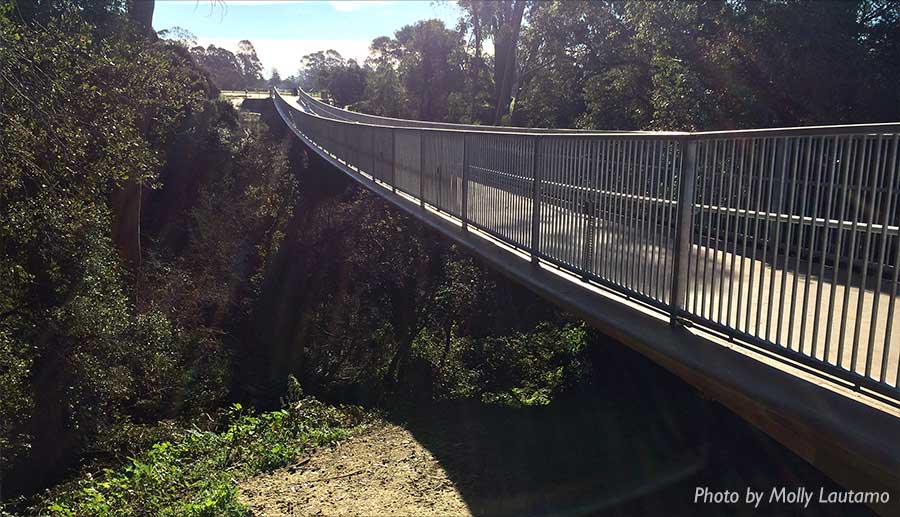
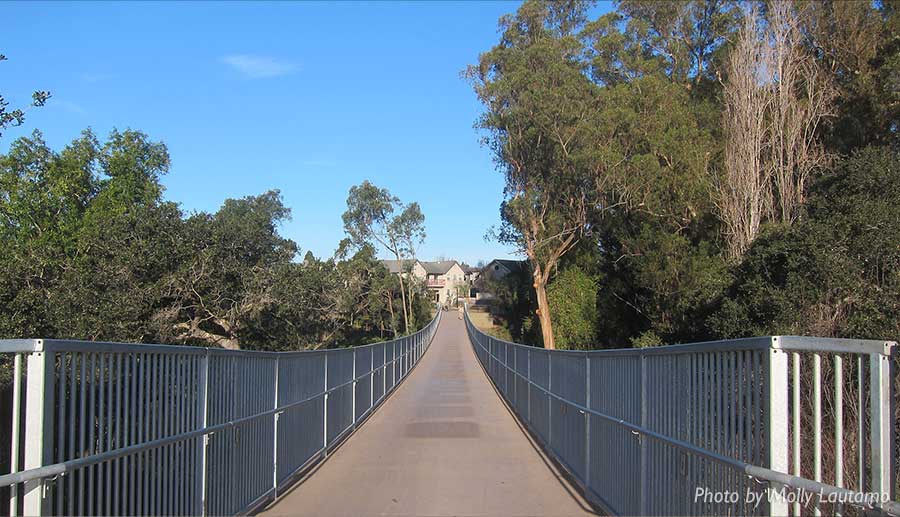
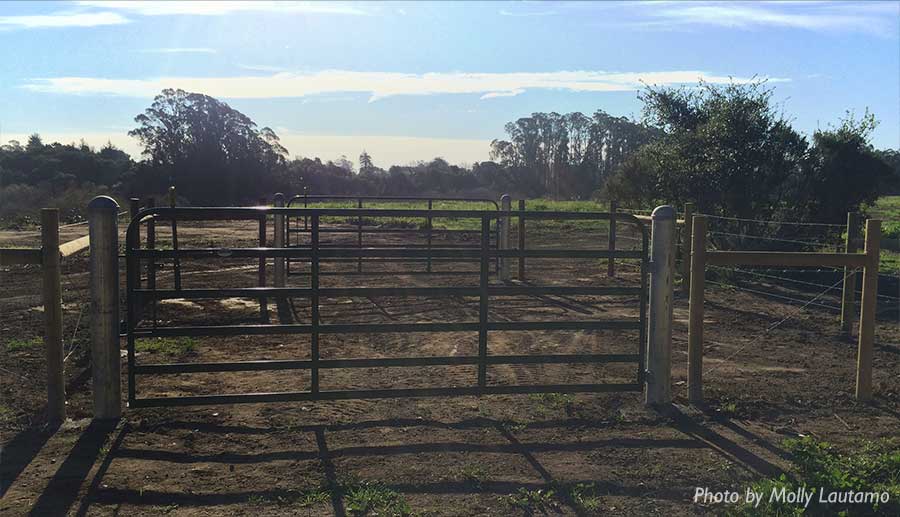
The new suspension bridge is a work of art, aurally, architecturally, in every sensory way. Even a little boy running a stick along the railings made me realize the material had been chosen, in part, for its acoustics. At dusk, the little lights appear… it’s mesmerizing.
This bridge allows us for the first time to walk or bicycle from downtown to South County without confronting “Manslaughter Alley” — also known as the commercial stretch of Soquel Ave. I felt like whole new person bicycling to Cabrillo, to the Harbor, to the Farmer’s Market.
I’ve been strolling Arana for years, and the new set up allowed me to visit paths and spots I’d never seen before. Incredible. I wasn’t expecting that. I’ve hiked it three times on foot since the new opening, I’ve brought children, dogs, my older folks in my life, on bike and by foot.
It’s a hit. Any other conclusion is just curmudgeons-gone-wild— Now I wish we could have something similar on the West Side, so there’s some way to get from Water to Swift that encourages community and safe travels. You are so lucky that you live near Arana!
I too have strolled Arana Gulch for years, and the new setup keeps me from visiting paths and spots I once enjoyed, places where the urban oppression fell away and I could see and hear nothing but natural sights and sounds. All that is gone now, washed away in a flood of pavement, skateboard noise, cell phone calls and rushing bicycles.
To the average person who knows little about wildlife, natural ecosystems, endangered species and the intricate web of life, Arana Gulch is now a pleasant park, where one can walk, jog or bicycle without having to encounter messy mud, inconvenient topography or dangerous wild animals (some of them on their hind legs). Adults and children can stand on the hard pavement and look at a sign that shows them what has been lost, and tells them what to think about it. Everyone can stroll within the lines of the barbed wire fences and view the new urban wildlife (cows) that has replaced the elk and deer that used to roam this grassland.
From the perspective of the natural inhabitants of Arana Gulch, the change is all negative. Over 200,000 square feet of critical habitat for the endangered Santa Cruz tarplant has been removed along the forty foot wide path of destruction created to build the paved bike road. Wild inhabitants that once enjoyed the quiet of the grassland are disturbed by the increased noise of people and their toys on the paved surface. The acoustical properties of the bridge are just more noise to furry ears listening for the approach of predators out shopping for lunch. Lights on the bridges interfere with delicate night vision.
If my perception of what has been lost amounts to “curmudgeons-gone-wild” then I am proud to be a curmudgeon. The natural world is not an amusement park for uncaring humans. It is the only home for the depth and breadth of biodiversity that sustains all life, including human life.
Humans are only one species among many. It’s time we start acting liking it.
Thank you, Molly, for writing as fair an article as can be done about a very complicated issue. Your pictures especially tell the tale of a Natural Area/Open Space forever changed into a gentrified park.
There are a couple of important errors of fact that I bring to your attention.
You write that the paved “… paths are four feet wide…” They are eight feet wide. The engineered shoulders are two feet wide (they have base rock below what looks like “soil” but soil in a native grassland has to be very deep for drought-tolerant native species to find groundwater for their deep root systems. There is a structure to living soil. Imagine bulldozing a barn into a pile and then bulldozing it into a barn again. Nuh uh.
Also, I read the myth of the drug users in this article, as you write about reclaiming “a space that before felt unsafe at times due to drug-users and mentally unstable homeless people using it as a place to take a hit or a nap.” The homeless camps and drug users have always been out of site of the AG meadow, virtually out of the greenbelt itself, concentrated just off Capitola Road, east of Arana Creek. Yes, high school students used to smoke pot after school in the trees that are now accessible from the eastern Marsh Vista Trail. I am one month shy of being 70 years old and I have never felt afraid to be at AG. Never ever.
I am not sure what you mean by “It is unclear if these animals will still use the open prairie here with fencing and cattle making this a potentially unsafe corridor.” Unsafe for the animals or for people?! First, the animals you listed will most certainly continue to call even the gentrified, hustling-bustling AG Park their home. They are mostly nocturnal animals (Coyote as an exception) and they will hunt at night. The Park is closed from one hour after sunset to one hour before sunrise. Signage warns people about the coyotes. Unleashed dogs were never allowed in AG, even though 75% of dog owners ignored the leash ordinance. Stepped up enforcement by Park Rangers (as well as increased fine amounts) may help to reach compliance by dog owners. One can hope.
Under the heading of pluses, you wrote that “More community members using the space means it is far less likely to be a haven for drug users and people with bad intentions.” If you will contact me privately, I will show you the latest result of “bad intentions,” discovered this past weekend. There is now more vandalism and graffiti at AG than ever existed in the past 20 years before this transportation project was built. Graffiti even covered the bridge over Arana Creek before the official ribbon-cutting on January 14.
You wrote: “The new trails give cyclists a safe, speedy route from Midtown to the Eastside, hopefully encouraging more people to leave their cars in the driveway and commute by bike.” The City was required (by CalTrans) to remove from their original EIR the unsubstantiated claim that Broadway Brommer would result in getting people out of their cars. A 1/2 mile short cut through AG does nothing to address safety on the rest of the roadways both before and after AG. As for commuting (especially in the shorter daylight hours of winter), the bike road will be off limits to many commuters. Fewer cars on the road? Two weeks after the ribbon-cutting, on a weekday at 2:30 pm, in a 10 minute period at the Agnes Street entrance, we observed 8 people get out of 6 cars to walk in the “new” AG Park. People are driving from all over Santa Cruz to see the new park. One man drove from the west side, picked up his friend who lived four blocks from AG and drove them both to the entrance.
Last but not least, although Friends of Arana Gulch (FOAG) supports grazing management for the purpose of restoring the native grassland, including the signature endangered Holocarpha macredenia, the industrial strength paved routes and bridges over two creeks were never necessary for the City to accomplish restoration of the coastal terrace prairie grassland. We could have had a real 4′ wide paved route from the Agnes St. entrance, out to the middle of the grassland, allowing “people of all physical abilities to experience Arana Gulch” as FOAG had proposed as an alternative in 2006. That alternative was ignored absolutely.
One last remark: the music of the video is all about noise, isn’t it? That noisy music is so very appropriate!!! The CA Coastal Commission allowed the paved bike short cut only because a transportation project was renamed an “interpretive trail” by the City, in order to get approval from the Coastal Commission. So, here we are. AG has a transportation project cutting through its heart. The lie came true. The bicyclist of the video speeds through the sights, smells, sounds and glad tidings of what is left of the once-was-a-greenbelt (now a pink ribbon of pavement).
In answer to your final question, yes, the paved routes are terrible. They are terrible because they paved over paradise; their combined surface is a parking lot. Less living breathing soil in a County of more and more pavement. For those who voted to protect Arana Gulch from encroaching urban development (Measure O, March 1979 and reaffirmed by another vote in 1992), they are terrible.
Thanks, Molly, for writing this article. And thank you for giving me the space to speak my mind. While I am not sitting around being bitter…and will continue to work to save whatever of the natural world is left after this destructive project, when asked, I will always remind anyone anytime anywhere of what was lost.
Arana Gulch RIP.
Jean
Thank you to everyone who commented on this piece here and on Facebook. Although in many ways I enjoy the new multi-use trails, I also feel the loss of what was once a true greenbelt in the middle of town. I’m grateful though that there are still dirt paths around the perimeter and that the community has embraced this as a new public space to come together and enjoy the outdoors. I hope that the new Arana Gulch, although drastically changed, will introduce more people of all different backgrounds and physical abilities to some of the unique habitats we are so lucky to have here in Santa Cruz.
Arana Gulch is no longer the “unique” habitat it once was. That habitat has been developed, altered completely. Habitat is where wild things thrive and prosper – the natural home or environment of an animal, plant, or other organism. A habitat is not for us to enjoy; it is necessary for the life of its component species, which can number in the thousands, even though unseen by human eyes.
A greenbelt is not just a place where grass grows. Arana Gulch was a complex place, composed of many biosystems. Now most of it is a gentrified park, with a half mile of 8′ wide paved bike routes, a mile of 2′ wide graded shoulders of those routes, a 1,000 square foot concrete bridge abutment, one and a half miles of four and a half foot high barbed wire fencing, plugs of concrete for the fence posts, water lines buried in the prairie soil, a back flow device, soon to appear water troughs, two bollards, benches and signs to read, 12 directional signs for bicyclists, and eight oak trees pruned to look neat and tidy, like street trees. Not natural.
The only thing to be learned at Arana Gulch now is how to tame a wild place into submission. People of different backgrounds and physical abilities could have introduced that experience by exploring the developed urban environment all around them, including all of the other manicured parks throughout the County. Nope, we didn’t need to fragment coastal terrace prairie habitat with two ribbons of pink pervious paths in order to introduce people to the once-unique-habitat of Arana Gulch Greenbelt.